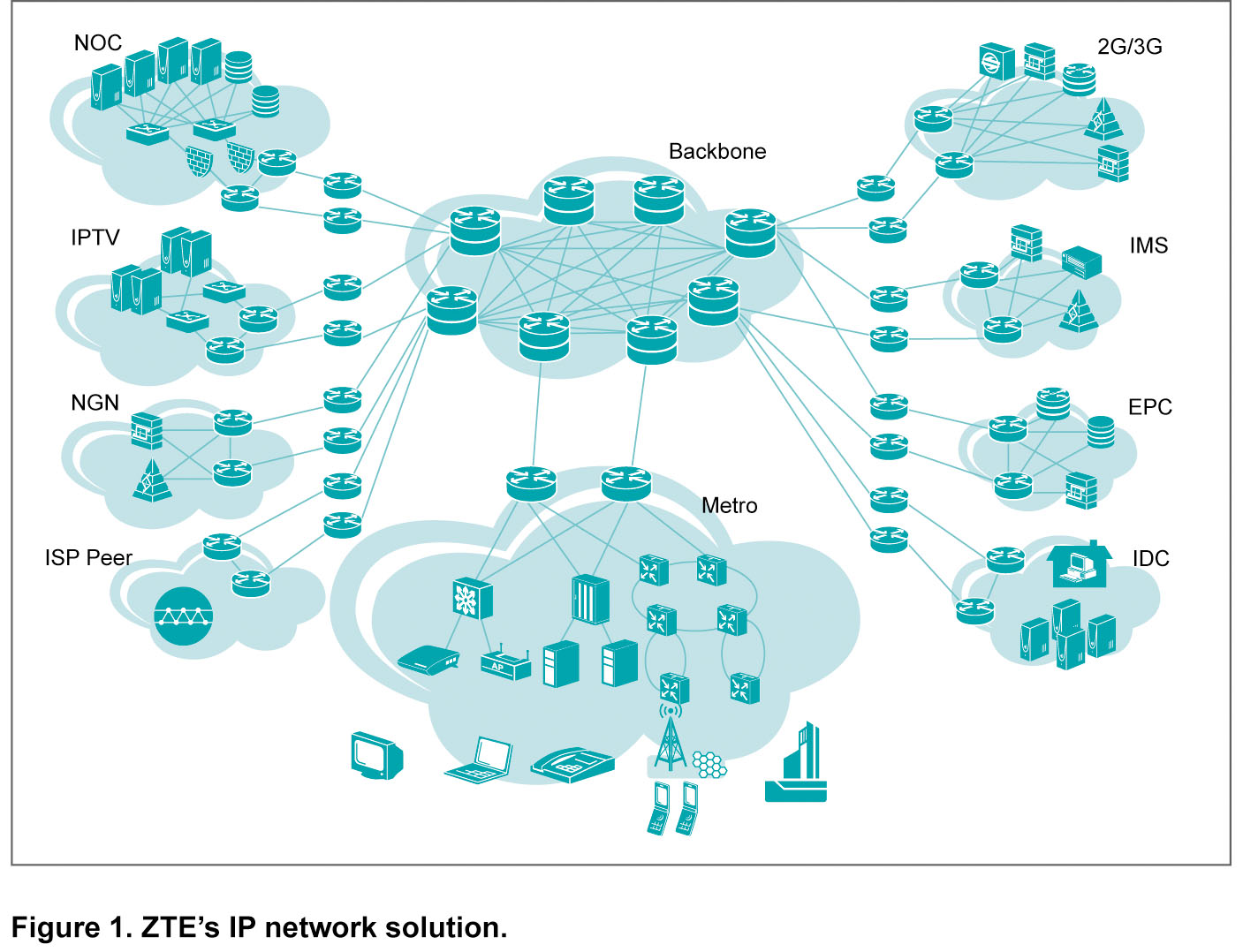Cluster Routers: The Best Choice for Future-Oriented Backbone Network
It took only ten years to increase the interface rate of a router from 2.5Gbps to 10Gbps, 40Gbps and even 100Gbps. Changes in the Internet have proceeded rapidly and have gone well beyond what could have been imagined. The Internet has developed from a simple data carrier to a central part of the information infrastructure of whole societies. And the IP backbone network, a pillar of the Internet, is now required to bear an increasing amount of data traffic.
As the growth of IP services continues to boom, data within the backbone network becomes more complex. IPTV, VoD, and P2P traffic places greater demands on the scalability and reliability of the network.
■ Reliability and self-healing
Today’s Internet comprises a countless number of operator nodes. The stability of operator backbone networks not only influences the networks and services run by operators themselves, but also the entire Internet. Considering the vast ocean of data exchanged over the Internet in real time, even a small failure can result in multi-million dollar losses. Therefore, IP backbone networks must be self-healing, highly reliable, and capable of automated troubleshooting and recovery in the event of sudden abnormality. Such networks must also guarantee availability under normal operation.
■ Scalability and growth
The IP backbone network is a scalable network. Internet traffic doubles every 12 months, with IP traffic growing exponentially. With the rise of mobile broadband access, video and interactive services, and new network services, the growth of traffic carried over the IP backbone network is expected to accelerate rapidly. Backbone networks must therefore have excellent scalability to counter the skyrocketing amount of data. If scalability is not addressed, investors will not be able to transform their existing commercial networks to suit their business growth, and in full accordance with an ideal network structure plan. Additional nodes will add complexity to a clear and neat network, which in turn will impact service support and network maintenance. Nodes should guarantee reliable continuation of services under a non-optimal network structure, and provide more flexible, intelligent service control capabilities. Such requirements are part of the growth of a network.
■ Full-service bearer
The IP backbone network is also a converged network that bears many kinds of services. Today, almost all services are based on TCP/IP, and all applications can be provided on a uniform network. Bearer networks are converged at all layers, and the IP backbone network is the starting point on the path to convergence.
By rapidly responding to market demands, ZTE has introduced the ZXR10 T8000 carrier-class router which is designed to meet current and future service needs. It supports 16+64 chassis cascade, and is suitable as the Internet core node, backbone network super node, and egress of a large MAN. ZXR10 T8000 is an ideal choice for operators aiming to build a flat network and looking toward the long term evolution of their uniform bearer network.
■ Multi-level assurance
To ensure the backbone network is reliable, ZXR10 T8000 provides technical assurance in three aspects. It applies Non Stop Routing (NSR), hot patching, and In-Service Component Upgrade (ISCU) technologies for dynamic loading of functions. Using active/standby switching of inter-frame logical entities, a single router and a cluster of routers can be expanded smoothly without causing interruption to running services. For the numerous routing table entries and complicated forwarding relations in a backbone network, ZXR10 T8000 adopts distributed processing, routing filtering, and protection mechanisms to rapidly screen failed nodes. This eliminates routing instability and maintains stable forwarding relations between the nodes. ZXR10 T8000 also assures reliability at five levels—system architecture, equipment components, operating system, protocol processing, and message flows—to ensure steady operation with 99.999% availability.
■ Ultra-large capacity cluster
Scalability of an IP backbone network can be improved by increasing the capacity of a single device, changing the network structure with distributed network layers where multiple devices are deployed in one node, and placing multiple routers into a cluster. Clustering is a cheaper way of meeting demands of service growth, network performance, and capacity expansion without creating additional network complexity. ZXR10 T8000 supports multi-chassis cascade and linear capacity expansion. The switching capacity can reach up to 200Tbps. At present, the ZXR10 T8000 line card provides a 100Gbps wire-speed port at each slot that supports smooth upgrade to 400Gbps.
■ Independent intellectual property rights
ZTE owns independent intellectual property rights for ZXR10 T8000. Its ZXROS system is a modular multi-process system. Using differentiated kernel and user mode, independent component process space, and full distributed processing, it enables the operating system to be open and reliable, and paves the way for multi-service bearing and control. After years of research and development, ZTE has made breakthroughs in top-class router chipsets, and has built its own chip system that provides for continuous evolution of equipment and technology.
■ Energy conservation
By applying energy-saving technologies such as smart power supply, smart dormancy process, smart service adjustment, smart line-card startup, and smart fan control, ZXR10 T8000 is energy efficient and consumes 23% less power.
Backed by a full product range, and drawing on years of network construction experience, ZTE can provide a total IP network solution with well-defined architecture, as shown in Figure 1.

An IP backbone network employing ZXR10 carrier-class routers provides independent service access layers, differentiated SLA, and security assurance, thereby meeting the needs of operators. The reliability, scalability, and energy efficiency of such a network gives operators a distinct market advantage.